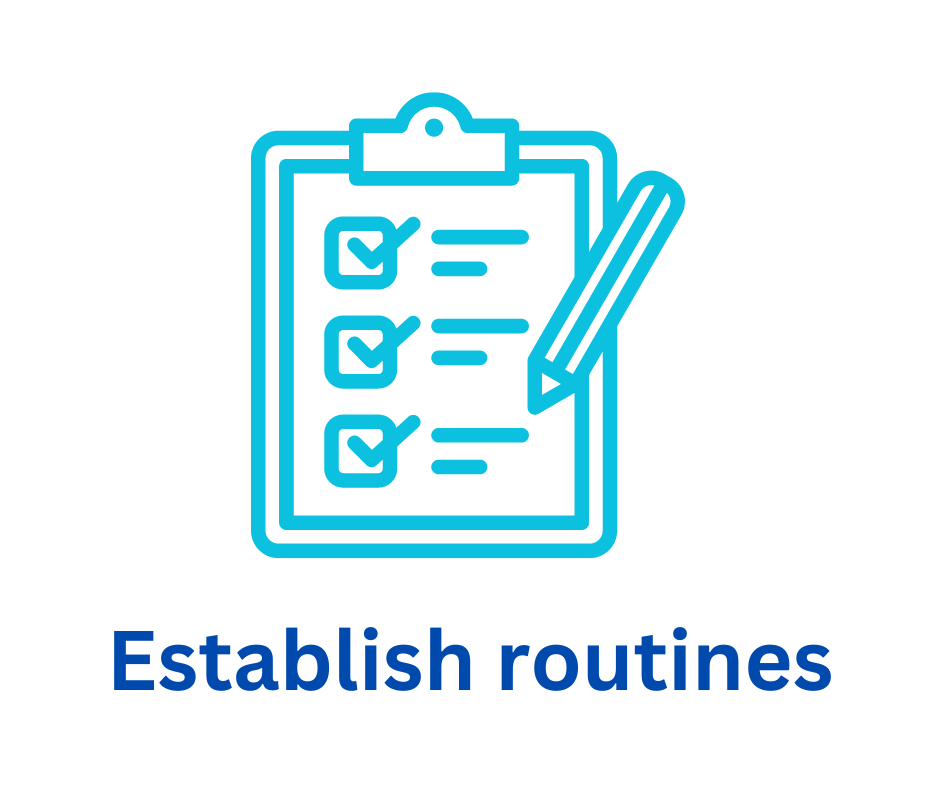
- Routines save time.
- Routines help to reduce extraneous cognitive load so that children can focus on what matters – the learning.
- Teach and practice the routines that pupils use regularly. For example, the routine to enter the classroom or the routine to respond on mini-whiteboards.
Checklist
(for introducing a new routine)
| Break the routine into small steps. | ✔ |
| Model each step | ✔ |
| Practise each step | ✔ |
| Don’t let standards slip | ✔ |
Examples
Mini-whiteboard routine
- Teacher poses a question and asked children to respond on their mini-whiteboards.
- Children write BIG so that it is easy to see.
- Children keep their boards down and covered until asked to show them
- Children raise their boards simultaneously. Use a simple 3-2-1- ‘show me’.
- Children hold their boards at chest height and keep their boards still.
- Teacher scans all boards (and insists boards stay up until they have all been seen).
- Check and respond. Decide what to do with the information (Address a misconception. Re-teach the content. Practise again. Move on. Make a note of the children that may need further support. Deploy your learning support based on answers).
Further Reading
- Tips for Teachers – mini whiteboard routines.
- Walkthrus: Signal, Pause, Insist
Video
More examples of how to gather children’s attention
- All eyes on me in
- Three
- Pencils down
- Two
- Everyone Silent
- One
- Thank you
- Be seen looking. Scan the room and wait for ALL children before speaking.
- If needed (Correct anonymously: I’m just waiting for one person… thank you)